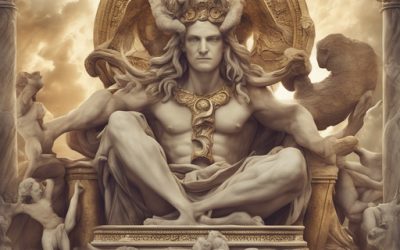By William H. Benson
The Parallel Lives
Of The NOBLE AMERICAN RELIGIOUS THINKERS AND BELIEVERS:
Roger Williams VS. Cotton Mathers
NEW ARTICLES
The 1790’s: Fierce Political Fights
Last time in these pages, I wrote about the sharp division within George Washington’s Presidential administration, that between Alexander Hamilton, founder of the Federalist Party, and Thomas Jefferson, founder of the Democratic-Republican Party.
That division between the two parties accelerated throughout the 1790’s.
In the election of 1796, John Adams won the presidency with 71 electoral votes to Thomas Jefferson’s 68 votes. Per the Constitution then, the one with the most votes would serve as President, and the one with the second most votes would serve as Vice-President.
It was an unpleasant situation, Adams as President and Jefferson as Vice-President. In their respective newspapers, the two parties pummeled each other and fell into vicious name calling.
Newspaper editors who favored the Jeffersonians called John Adams “a hideous character, who has neither the force and firmness of a man nor the gentleness and sensibility of a woman.” The same editors labeled Adams “a fool, a hypocrite, and a tyrant.”
Editors who supported Adams called Jefferson “a mean-spirited, low-lived fellow, a weakling, an atheist, and a libertine.” In addition, they called into question Jefferson’s English parentage.
A certain Federalist was convinced that Jefferson intended to “unleash the terrible evils of democracy,” allowing the unwashed masses to seek office in the Federal government. Another Federalist said that “when the pot boils, the scum will rise.”
In early 1798, Matthew Lyon, a fierce anti-Federalist and a Congressman from Vermont, drifted into a war of words, trading back and forth put-downs, with Roger Griswold, a volatile Democratic-Republican, also a Congressman, but from Connecticut.
On January 31, Lyon propelled tobacco juice into Griswold’s eyes.
Two weeks later, on February 15, Griswold “walked up to Lyon’s desk and hit him about the head and shoulders with a hickory walking stick. Lyon grabbed a pair of fireplace iron tongs and beat Griswold back. The two men dropped their weapons and threw fists at each other.”
Because the Federalists had the votes in Congress, they passed four laws that summer.
On June 18, 1798, Congress passed the Naturalization Act, that extended the residency requirement for immigrants from five to fourteen years before they could attain citizenship.
On June 25, Congress passed the Alien Friends Act, that authorized the President to deport any non-citizen deemed dangerous to the peace and safety of the U.S.
On July 6, Congress passed the Alien Enemies Act, that authorized the President to detain or deport immigrants from a hostile nation during wartime.
On July 14, Congress passed the Sedition Act, that made criminal any “false, scandalous, or malicious writing against the government,” in pamphlets or newspapers.
Jefferson and his fellow Democratic-Republicans were aghast. They perceived those four laws as a political attack upon their party. The four laws raised questions about the proper balance between the two parties, and the limits of free speech and a free press.
The Alien Friends Act and the Sedition Act both expired in 1800, and Congress repealed the Naturalization Act in 1802. The Alien Enemies Act (AEA) though is still the law of the land.
Presidents have used it four times: the War of 1812, World War I, and World War II. The AEA was used to intern in camps certain Japanese, German, and Italian people during World War II.
Last March, Donald Trump attempted to use the 1798 AEA to “justify deporting Venezuelans to El Salvador, that they were members of a Venezuelan gang that had infiltrated the U.S.”
In the election of 1800, Thomas Jefferson received 73 votes, the same as Aaron Burr. A vote in Congress made Jefferson President and Burr Vice-President. The Federalists were swept out.
National Freedom Day and Black History Month
On Feb. 7, 1926, Carter G. Woodson, a professor of history, announced that he would celebrate and highlight for the first time ever a single week devoted to African-American history, and he called it “Negro History Week.”
He selected the second week in February because of its proximity to Abraham Lincoln and Frederick Douglass’s birthdays, Lincoln on Feb. 12, and Douglass on a day in February.
Frederick Douglass’ “Slaveholder’s Sermon”
On May 11, 2017, the newly-elected U.S. President, Donald Trump, issued an executive order to form a Presidential Advisory Commission on Election Integrity. He appointed Vice-President Mike Pence as chair, and Kansas State’s Secretary of State Kris Kobach as vice-chair.
Assertion is not evidence
On May 11, 2017, the newly-elected U.S. President, Donald Trump, issued an executive order to form a Presidential Advisory Commission on Election Integrity. He appointed Vice-President Mike Pence as chair, and Kansas State’s Secretary of State Kris Kobach as vice-chair.
Unique words in history
December 16 marked the 250th anniversary of the Boston Tea Party, when colonial Bostonians dressed as Mohawk Indians boarded three ships—Dartmouth, Eleanor, and Beaver—split open 340 chests filled with tea, and dumped their contents into Boston’s harbor.
This defiant act was directed as a protest against Parliament’s insistence that the consignees of the tea in the American colonies pay an import tax, to keep afloat the struggling British East India Company, which brought the tea to the colonists.
The colonists were angry. They paid taxes to their
Secession and Abraham Lincoln
Abraham Lincoln faced an absolute calamity on March 4, 1861, the day when Chief Justice Roger Taney administered the oath of office to Lincoln at his inauguration.
Already seven states from the South had seceded, or withdrawn, from the Union because voters had elected Lincoln President of the United States. Southern voters believed that Lincoln opposed the expansion of slavery into western territories, like Kansas and Nebraska.
South Carolina voted to secede on December 20, 1860, forty-four days…
Election of 1864
Throughout the year of 1864, President Abraham Lincoln believed that he would lose the election in November. He admitted in August, “I am going to be beaten, and unless some great change takes place, badly beaten.” The odds were stacked against him.
Plenty of voters in the Union had reason to despise, even hate, Lincoln.
Older Posts
Tunnels and war coincide
People burrow into the subsoil, build tunnels, plus storage rooms, and stockpile food and water, for one reason, and that is to stay alive. Atop the ground, in the open air, in the sunshine, they feel oppressed, insecure, and poised to die or suffer an injury.
On July 4, 1863, thirty-one thousand Confederate soldiers, trapped inside Vicksburg, on the Mississippi River, surrendered to the Union’s commanding officer, Ulysses S. Grant, on the forty-eighth day of Grant’s siege of that town.
During the siege, civilians had dug some five hundred caves into the hillsides, and fitted them out with “rugs, beds, and chairs.” One cave dweller said, “We were in hourly dread of snakes. The vines and thickets were full of them.”
What can I achieve with Greek mythology?
What is the good that comes from knowing even a little about the ancient Greeks’ religion?
I prefer to learn of actual people who once lived in a historical setting, a time and a place. Greek mythology, instead, is a collection of make-believe fantasy stories I would like to know more of, but I find it hard to gain much traction from them, practical use. I wonder.
Mark Twain disparaged the whole notion. “Classics,” he said, “are the books that everybody wants to claim to have read, but nobody wants to read.”
After all, Greek religion is mythology, a series of stories about the gods and the goddesses whom the Greeks believed resided on or near Mount Olympus.
They included a dozen Olympians: Zeus, Poseidon, Hades, Hestia, Her
Steve Inskeep’s new book: “Differ We Must”
Since 2004, radio personality Steve Inskeep has hosted National Public Radio’s “Morning Edition.” During Covid lockdown in 2020, at home with time to spare, Inskeep researched and wrote a book that was published this past week.
Inskeep found its title, “Differ We Must: How Lincoln Succeeded in a Divided America,” in a letter that Abraham Lincoln wrote to his good friend Joshua Speed, dated August 24, 1855.
Last week, Inskeep explained to Amna Nawaz of PBS News Hour, and Scott Simon of NPR, that Speed was from Kentucky, that he was from a rich family that owned more than 50 slaves. Speed approved of slavery. Lincoln also was from Kentucky, but his family was poor, and Lincoln hated slavery.
Peering into the future
Peering into the futureSome people possess a talent to peer deep into the future. In Biblical times people called them prophets. In the Middle Ages, people believed them wizards. Today they are economists who make projections based upon previous business data. Thomas...
The discovery near Motza, Israel
The main highway running east to west across Israel’s width is Highway One. It connects Tel Aviv and Jerusalem to the Jordan River Valley, near Jericho.
In 2012, highway contractors working 5 kilometers west of Jerusalem near the town of Motza uncovered a Neolithic town, home to perhaps 3,000 people at one time.
A new thing, an interstate highway, led to a discovery of an old thing, a town.
Tel Motza is now the largest Neolithic site in Israel. Archaeologists define a Tel as “a mound or small hill that has built up over centuries of occupation.” Excavators dig down through the layers until they find a bottom layer.
Archaeologists uncovered stone tools made of flint—arrowheads, axes, sickle blades, and knives—as well as human bones, clay figurines, grain silos, and a temple.
Books and censorship
The list of banned, censored, and challenged books is long and illustrious.
“Decameron” (1353) by Giovanni Boccaccio, and “Canterbury Tales” (1476) by Geoffrey Chaucer were banned from U. S. mail because of the Federal Anti-Obscenity Law of 1873, known as the Comstock Law.
That law “banned the sending or receiving of works containing ‘obscene, ‘filthy,’ or ‘inappropriate’ material.
William Pynchon, a prominent New England landowner and founder of Springfield, Massachusetts, wrote a startling critique of Puritanism, that he mailed to London and had it published there in 1650. He entitled it “The Meritorious Price of Our Redemption.”

One of University of Northern Colorado’s 2020 Honored Alumni
William H. Benson
Local has provided scholarships for history students for 15 years
A Sterling resident is among five alumni selected to be recognized this year by the University of Northern Colorado. Bill Benson is one of college’s 2020 Honored Alumni.
Each year UNC honors alumni in recognition for their outstanding contributions to the college, their profession and their community. This year’s honorees were to be recognized at an awards ceremony on March 27, but due to the COVID-19 outbreak that event has been cancelled. Instead UNC will recognize the honorees in the fall during homecoming Oct. 10 and 11……
Newspaper Columns
The Duodecimal System
For centuries, the ancient Romans calculated sums with their clunky numerals: I, V, X, L, C, D, and M; or one, five, ten, 50, 100, 500, and 1,000. They knew nothing better.
The Thirteenth Amendment
On Jan. 1, 1863, President Abraham Lincoln signed the Emancipation Proclamation, and by it, he declared that “all persons held as slaves” within the rebellious states “are and henceforward shall be free.” Lincoln’s Proclamation freed some 3.1 million slaves within the Confederacy.
The Fourteenth Amendment
After Congress and enough states ratified the thirteenth amendment that terminated slavery, Congress passed the Civil Rights Act of 1866. This law declared that “all people born in the United States are entitled to be citizens, without regard to race, color, or previous condition of slavery or involuntary servitude.” The Act equated birth to citizenship.
The New-York Packet and the Constitution
Jill Lepore, the Harvard historian, published her newest book a month ago, These Truths: A History of the United States. In a short introduction, she describes in detail the Oct. 30, 1787 edition of a semi-weekly newspaper, The New-York Packet.
Mr. Benson’s writings on the U.S. Constitution are a great addition to the South Platte Sentinel. Its inspiring to see the history of the highest laws of this country passed on to others.
– Richard Hogan
Mr. Benson, I cannot thank you enough for this scholarship. As a first-generation college student, the prospect of finding a way to afford college is a very daunting one. Thanks to your generous donation, my dream of attending UNC and continuing my success here is far more achievable
– Cedric Sage Nixon
Donec bibendum tortor non vestibulum dapibus. Cras id tempor risus. Curabitur eu dui pellentesque, pharetra purus viverra.
– Extra Times
FUTURE BOOKS
- Thomas Paine vs. George Whitefield
- Ralph Waldo Emerson vs. Joseph Smith
- William James vs. Mary Baker Eddy
- Mark Twain vs. Billy Graham
- Henry Louis Mencken vs. Jim Bakker












